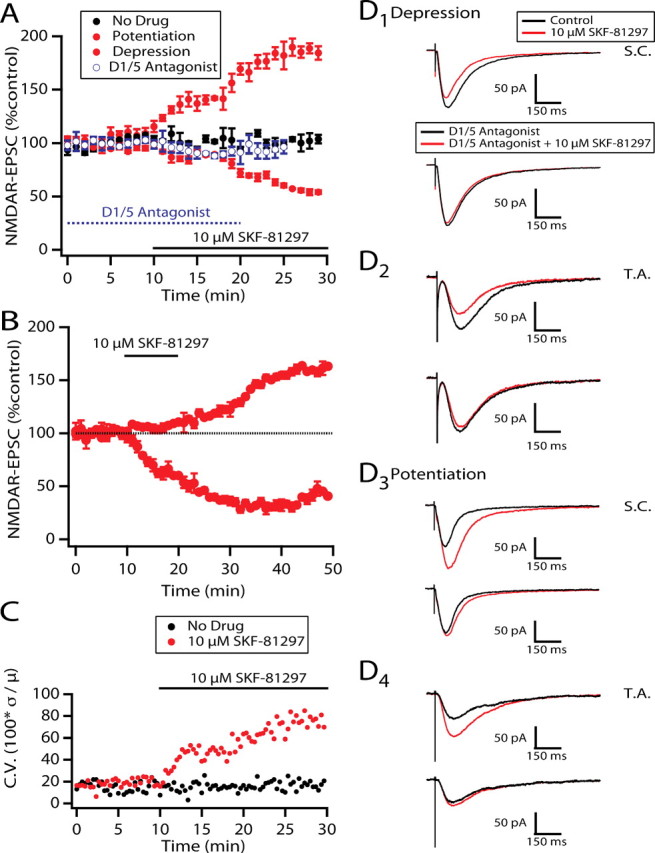Figure 2.

Both polarities of plastic D1/D5 effects are blocked by selective D1/D5 antagonists. A is a graph showing onset of D1/D5 effects under control conditions or with preexposure to the D1/D5 antagonists (results were pooled from both reagents because their antagonistic actions were indistinguishable, as described in Results). B is a similar graph but with a short exposure to the agonist showing a plastic effect that outlasts removal of the agonist by >20 min. C illustrates the change in coefficient of variance in the presence of D1/D5 agonist compared with “no drug” for all recorded NMDAR-EPSCs. D1–D4 are representative averages of current traces (n = 15/trace) evoked by stimulation of SC or TA inputs and recorded from cells in A at time t = 25 min to illustrate the blockade of NMDAR-EPSC responses to SKF-81297 by D1/D5 antagonists.
